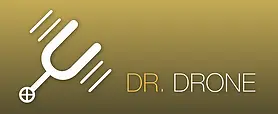
how to improve INTONATION
NOTE: If you want to have great intonation on your brass instrument, you need to develop your stability. Your face needs to be working in an efficient and productive manner in terms of controlling the vibration of your lips. Most people (myself included) that have struggled with intonation have developed a certain habit in terms of how the muscles are coordinated in the face to make sound- and it doesn't sustain frequencies evenly and consistently to do the jobs we want to do. This coordination has most likely also left certain muscles lacking the relative strength they need to 'hold' a certain setting or embouchure. The problem is two-fold. I look at it as 90% coordination and 10% strength. Learn more about stability - the first step in developing your intonation!
Now that you have been exposed to the importance of stability, let's take a look at what to do with your stable tones to improve intonation!
Intonation is an aural skill, yet so many people use a visual aid (tuners) to develop their intonation. Why? We need to develop the ability to hear sounds that are in tune, and imagine sounds that are in tune before we play them. It’s not visual, it’s aural. Additionally, a drone that provides constant sound allows us to develop a level of dependency- not independent control.
Years ago I made my “smart drones." You can watch this video to see and hear how I practice my intonation and check out my drones if you are interested in downloading practice tracks for your own. A better resource is the Doctor Drone app that my friend Eddie Ludema and I built. Same tools, more functionality.
More Primitive Version- Random Drones
While most musicians are encouraged to use a tuner to reference pitch, I believe that careful listening, an internalized concept of pitch, and mindfulness are the three main ingredients to develop world class intonation. Practicing with a tuner develops none of these. Most musicians move over to using drone pitches to play with and match pitch. This is a great step towards a more appropriate method of practice as it more closely relates to “live” interactive performance with other players. There is still a problem with attention. By using a solid and constant drone, we as musicians can become dependent on this external source of pitch reference. In a worse situation, we can go on “auto pilot” by letting the drone do most of the work. I wanted to create a practice method that allowed musicians to reference and “check in” with an external pitch source but challenged our attention and focus. I have developed a “smart drones” method to help musicians develop world-class proficiency.
This album is a collection of practice tracks that musicians can use to help develop consistent intonation. These tracks are designed to help develop independence with maintaining an accurate center of pitch. Drones have been randomly “cut up” so the reference pitches are audible, and then become silent. A player must maintain consistent pitch in order to continue to “line up” with the drones as they become audible. In keeping up with the 21st century, these tracks are available online so musicians can download them onto whatever portable device they wish. No more need to carry around a tuner. Your portable Mp3 player can provide all of the help you need!
Each track starts with a drone, and then it starts a random pattern where sometimes the drone is audible and other times it is silent. Play along with a track (or even sing a tune while a track is playing), and you will feel how much more effort and concentration it takes to play in tune than with a regular tuner or steady drone!
There are three levels of difficulty (similar to my metronome CD’s) that are available. There is a “beginner” album, an “Intermediate” album, and an “advanced” album. The biggest difference between these albums is the percentage of time that the drone is audible. For beginners,the drone is audible about 65% of the time. Intermediate tracks provide an audible drone for roughly 50% of the time. Lastly, advanced tracks have an audible drone roughly 35% of the time. Obviously the less information provided (in the form of audible drone) the more of a challenge it is to “line up” with the intonation of the drone. I find practicing with a drone allows me to not only rely on the external source for intonation, but I also “hide” within the sound. These random tracks require a player to still play with a confident approach, similar to performance. The drones are a way to evaluate how far I have “drifted” from my pitch reference.

DRONES - Beginning

DRONES - Intermediate

DRONES - Advanced
A Word on Pure Harmonic Intonation (Great for Ensemble Tuning)
Wind instruments in particular need to develop autonomous control of pure harmonic intonation for ensemble playing. Playing in tune with yourself is important, but I personally feel you HAVE to develop mastery of tuning the intervals so they are pure sounding. I developed a one-page reference sheet (available for download here) that discusses the physical properties of frequency and loudness as intonation and balance are both necessary to have a perfectly blended ensemble sound. Using the random drones will help your efforts greatly.

